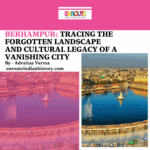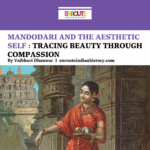Article Written By EIH Researcher And Writer
Shamiksha Mallick
A curation of Meherbai Jamsetjee Wahadia, the Vividh Vani is a Parsi 2-volume cookbook that was written in 1894. This made it the first Gujarati cookbook that was written by a woman which contains over 2000 interesting recipes.

Cover of first volume
Before the Vividh Vani, the first Parsi cookbook was by Burjorjee Nusserwanjee Heera named Pakwan Pothi which consisted of 400 recipes and was out in public in 1878. Meherbai, the writer of Vividh Vani hailed from an affluent family of Wahadia shipbuilders and also got the opportunity to go to school unlike the other girls of her age. Despite being from an upper class family, she spent a lot of time in the kitchen which inspired her to write the book. In the nineteenth century, parsis felt the need to expand the horizons of their culture and spread it across the country. This was aided by texts like Vividh Vani where Meherbai incorporated a number of different dishes after she perfected them with the help of her ‘special cooks’ that previously worked at European households. In this book, she not only incorporates Parsi dishes but introduces the readers to a variety of new recipes.
The book incorporates popular Parsi dishes like Akuri, which is a Parsi classic breakfast dish of seasoned and spicy scrambled eggs. It also consists of other Parsi breakfast recipes like aleti paleti, a dish made by the amalgamation of potatoes and Lamb offals, cooked together in tomato masala and served with pav bread along with Patiyo, a spicy Parsi prawn recipe. Besides these traditional items, the book also contains British recipes of tarts, cakes, jams, creams and dumplings. The cookbook also touches upon some Goan and Bohri recipes exposing an average Parsi housewife to a diverse culinary experience. This book is treasured by every Parsi household and is a legacy that is passed on from one generation to another.
Devoid of complex appliances, when the food was made on wooden stoves, the cookbook also throws light upon the difficulties while cooking that are faced by a Parsi lady. Behind the cookbook and recipes, there also lies a painful story of the demise of Meherbai. Meherbai became a victim of the bubonic plague of 1896 and was admitted in the Parsee Fever Hospital where Dr. Bahadurji tended to her and took great care of her. She was not able to survive the plague and died at an early age. Dr. Bahadurji, then became the source of strength for Meherbai’s mother, Pirojabai but he too passed away later. Deeply traumatised by the demise of the two, Pirojabai decided to issue a fresh edition of Vividh Vani in the memory of her daughter and her dream and dedicated it to the doctor for his compassion and care displayed towards her and Meherbai. The new edition wasn’t simply a reprint but it was entirely rewritten and new recipes were also added. Thus, this cookbook isn’t just a showcase of the various recipes within it but it also has deeper implications. It is a token of love and gratitude shown by a mother to her daughter, Meherbai and the doctor, Dr. Bahadurji.
All the 3 editions of the Vividh Vani are beautifully bound and have a cover that displays the changing scenarios in the Kitchen over the ages. The first edition shows a young woman cooking on a wooden stove, the second one displays a middle aged woman with an apron around her waist cooking on a coal fired sigri and the third edition shows a modern woman working on a kerosene stove. One can see the changes within a kitchen in these cover pictures.
References
Vividh Vani Vol 1
https://archive.org/details/vividh-vani-vol-1/Vividh-Vani-Vol-1/
Cookbooks As Archives of Taste, Feelings, Flavours, And Politics
How a Gujarati cookbook came to symbolise love and gratitude during the bubonic plague in Bombay
















